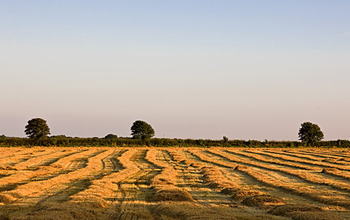Global S&T Development Trend Analysis Platform of Resources and Environment
| Scientists launch project to help predict air quality, enhance crop yields | |
| admin | |
| 2018-09-17 | |
| 发布年 | 2018 |
| 语种 | 英语 |
| 国家 | 美国 |
| 领域 | 气候变化 ; 地球科学 ; 资源环境 |
| 正文(英文) |  Understanding how air flows at night and over variable topography will help farmers and forecasters.
Find related stories on NSF's geosciences risk and resilience interest area. Tracking how air moves at night near the Earth's surface could provide insights into how air pollution spreads and when it's best to apply pesticides. This week, a team of University of South Carolina (USC) and University of Illinois (U of I) researchers will launch a project to do just that. Funded by the National Science Foundation (NSF), the two-month experiment -- called Stable Atmospheric Variability and Transport, or SAVANT -- will run from Sept. 15 to Nov. 15 in and near Mahomet, Illinois, and will measure air flow in what's known as a stable boundary layer. Stable boundary layers form at night over land when the Earth is cooler. Despite their frequent occurrence, they're relatively difficult to understand and observe. "Airflow near mountains, hills and valleys often has complicated patterns, even though the atmosphere appears quiet," says Chungu Lu, a program director in NSF's Division of Atmospheric and Geospace Sciences, which funds SAVANT. "Understanding these flow patterns is important for predicting air quality, enhancing crop yields and mitigating the impacts of hazardous materials releases, for example." Because stable boundary layers are challenging to observe, they've previously been under-represented in atmospheric models. "In recent years, we've learned about stable boundary layers in flat terrain," says April Hiscox, a meteorologist and geographer at USC, and a SAVANT principal investigator. Junming Wang at U of I and David Kristovich of the Illinois Water Survey are also co-leads on the SAVANT team. "There's also been a lot of work done in mountainous regions," says Hiscox,"but if you look at the United States and much of the world, there's a lot of space that is neither mountainous nor flat." The researchers will use smoke to track air movement and dispersion along slight dips in the landscape and to determine what conditions affect that movement. What makes SAVANT unique, the scientists say, is the inclusion of three LIDAR (light detection and ranging) systems, two that scan aerosol concentrations and one that measures 3D wind fields. Each night, the team will release smoke at the top of a single gully and track its movement and changing shape with the LIDAR systems. LIDAR works similarly to radar but uses light from a laser. The scientists selected four gullies just outside Champaign, Illinois, that represent the shallow topography they would like to understand. Air flow, wind speed and turbulence will be measured throughout the gullies with the National Center for Atmospheric Research's (NCAR) Integrated Surface Flux System and Integrated Surface Sounding facilities. NSF funds NCAR, a research and development center that supports studies in the field of atmospheric sciences. The researchers are looking to see what conditions -- level of cloud cover, wind speed and temperature -- are present when stable air layers occur. The answers will help meteorologists create improved models and make predictions about stable boundary layers, the scientists say. "The project can assist environmental management and agricultural operations, for example, by knowing when and where to set up anti-frost fans and pesticide applications, as well as in weather forecasting," Wang says. Stable boundary layers can cause aerosol sprays to drift. Equipping atmospheric scientists with the ability to predict such conditions could have a significant impact on the agricultural community, according to Hiscox. "The exciting thing about SAVANT is that it integrates many aspects of research and education," she says. "We have an applied aspect with the agricultural setting, a basic science component in that we will learn more about how the atmosphere functions, and educational opportunities for atmospheric researchers." -NSF- |
| URL | 查看原文 |
| 来源平台 | US National Scientific Foundation (NSF) |
| 文献类型 | 新闻 |
| 条目标识符 | http://119.78.100.173/C666/handle/2XK7JSWQ/126208 |
| 专题 | 气候变化 地球科学 资源环境科学 |
| 推荐引用方式 GB/T 7714 | admin. Scientists launch project to help predict air quality, enhance crop yields. 2018. |
| 条目包含的文件 | 条目无相关文件。 | |||||
| 个性服务 |
| 推荐该条目 |
| 保存到收藏夹 |
| 查看访问统计 |
| 导出为Endnote文件 |
| 谷歌学术 |
| 谷歌学术中相似的文章 |
| [admin]的文章 |
| 百度学术 |
| 百度学术中相似的文章 |
| [admin]的文章 |
| 必应学术 |
| 必应学术中相似的文章 |
| [admin]的文章 |
| 相关权益政策 |
| 暂无数据 |
| 收藏/分享 |
除非特别说明,本系统中所有内容都受版权保护,并保留所有权利。
修改评论